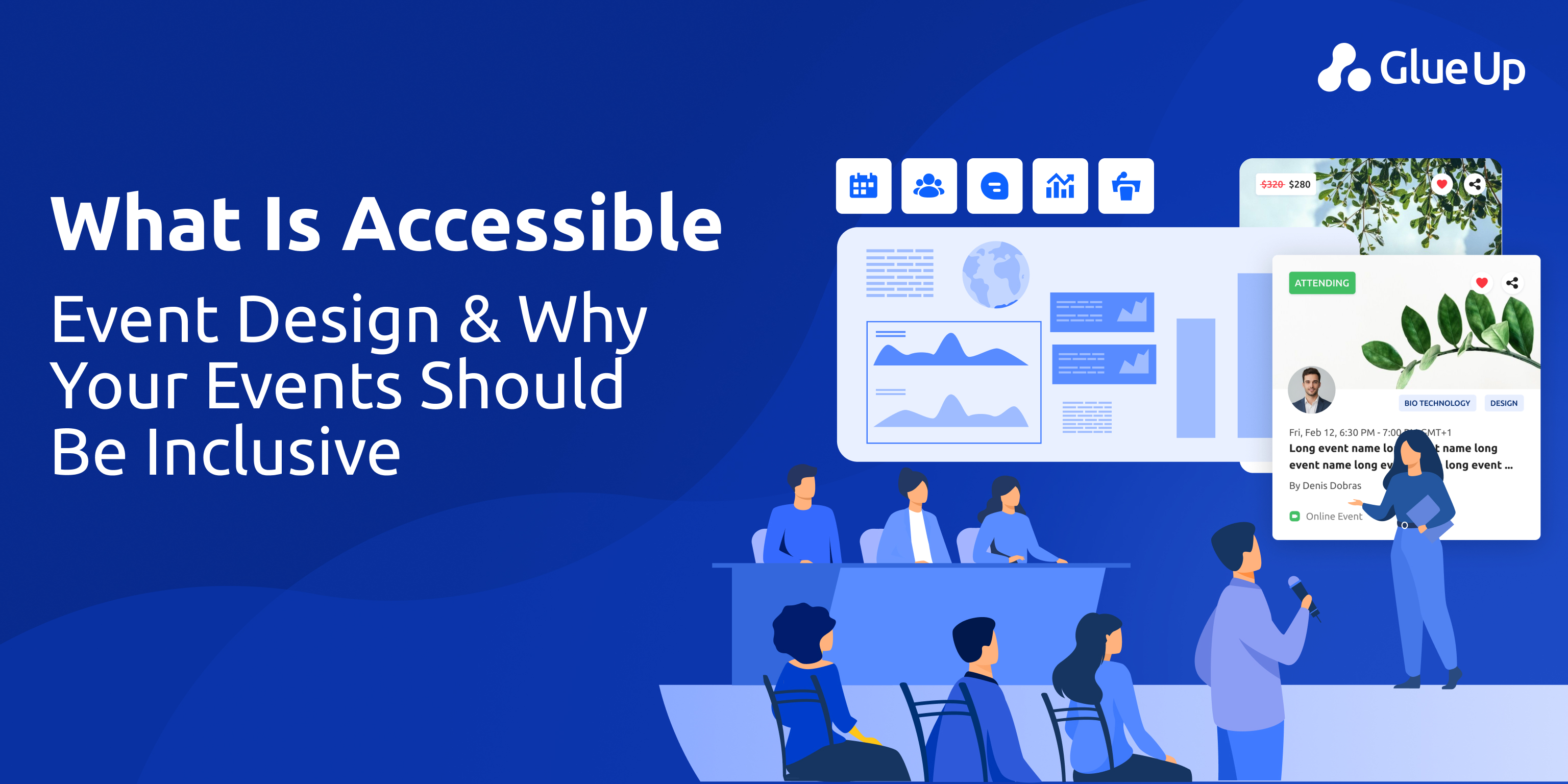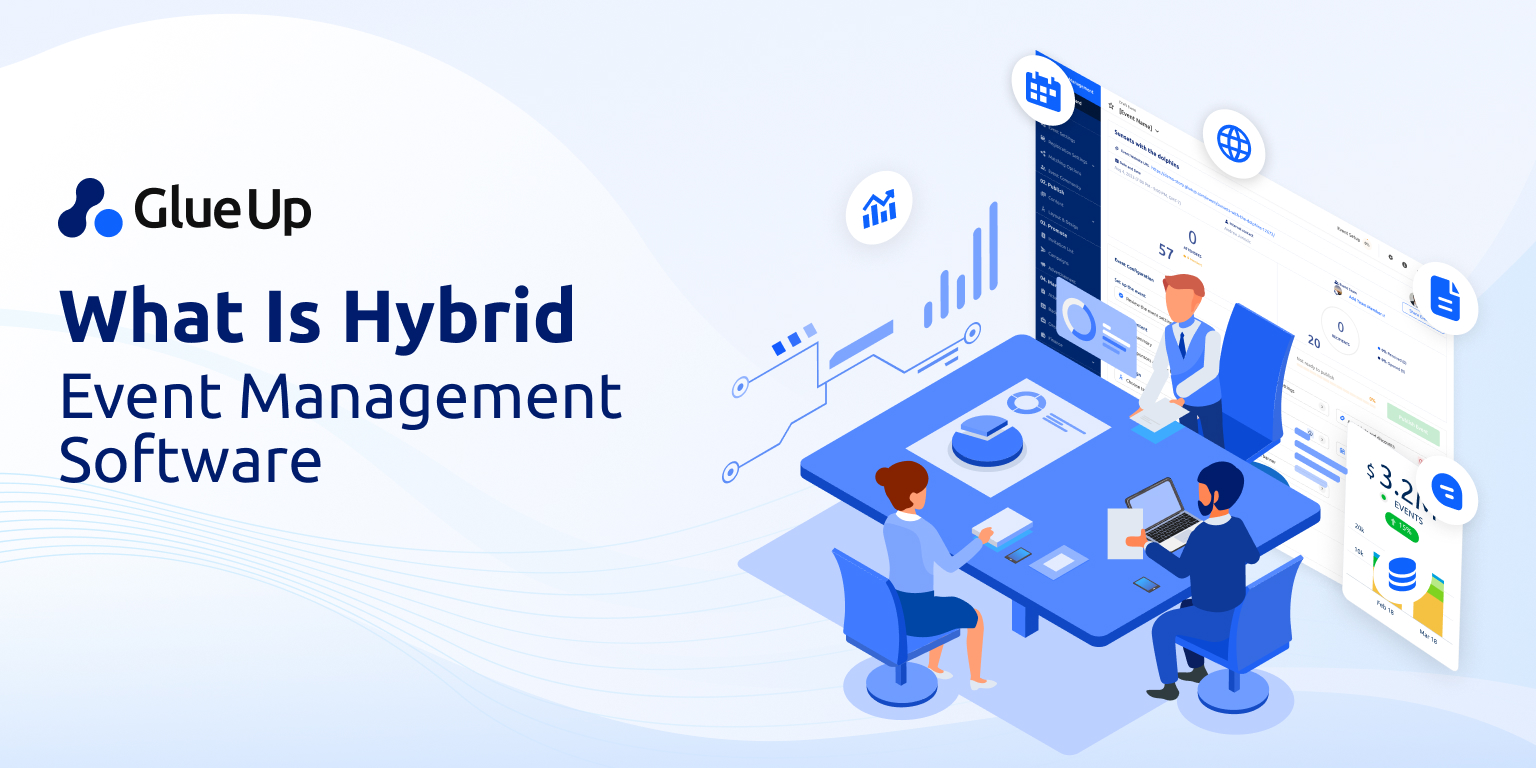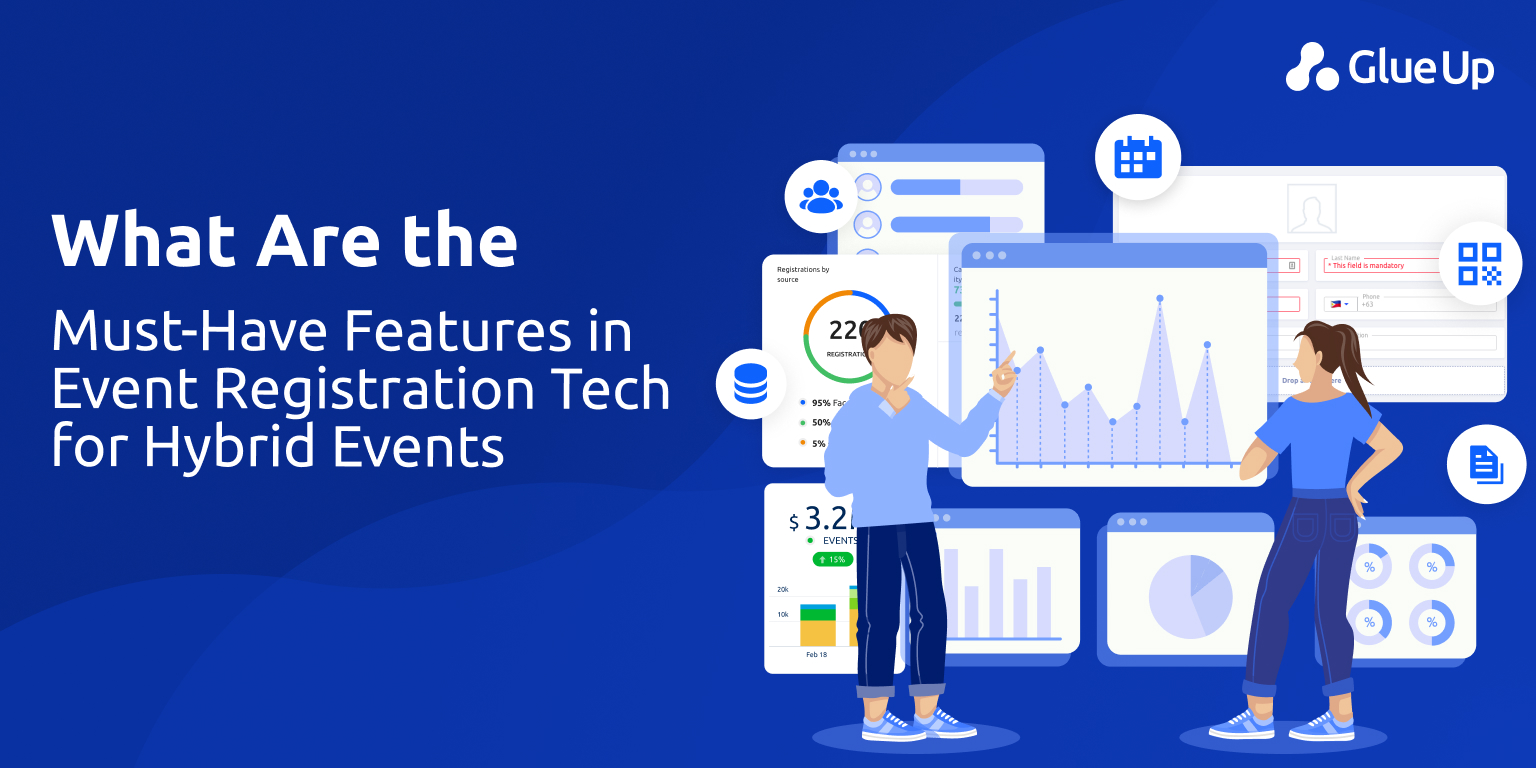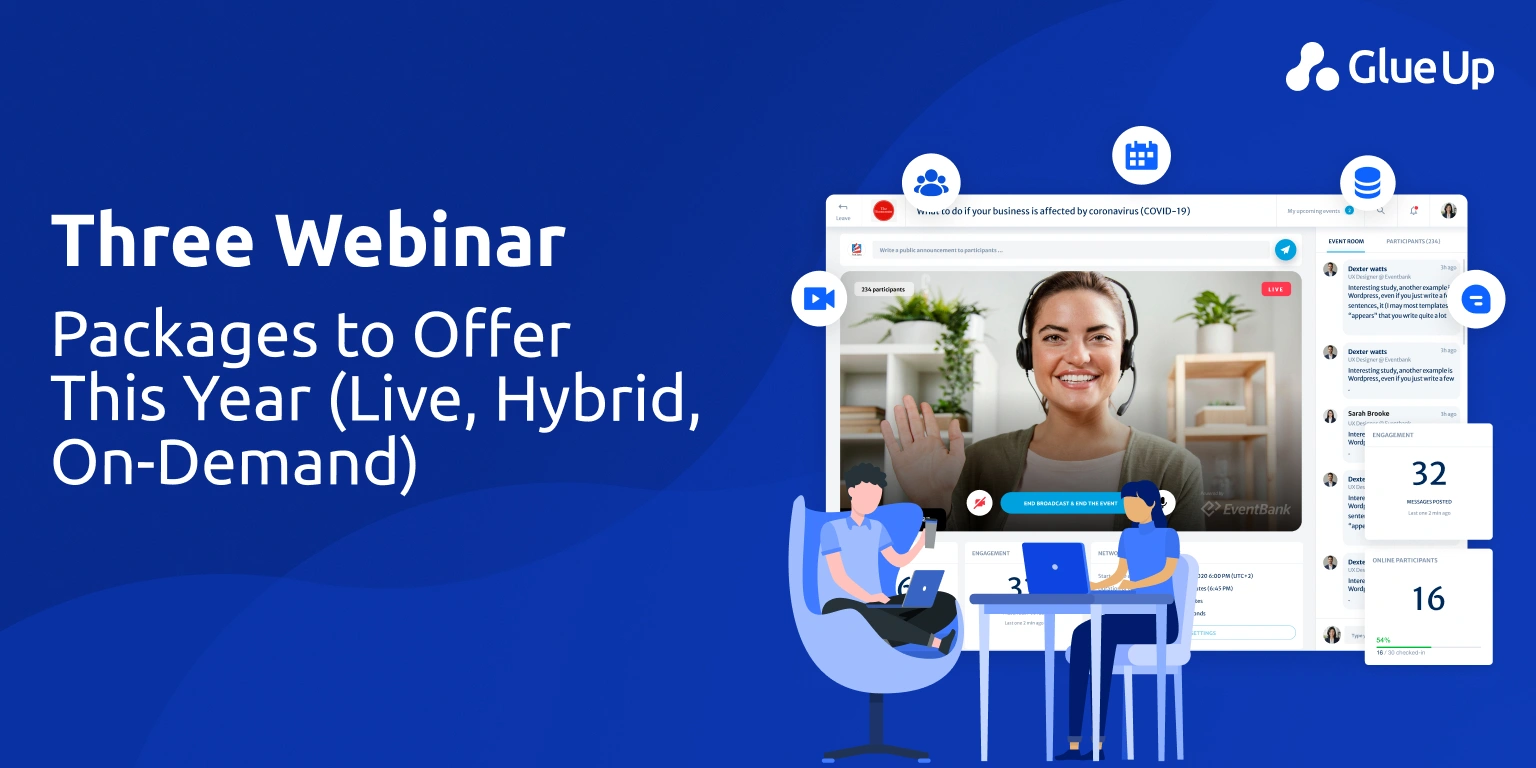
You’re about to embark on planning an inclusive and accessible event. From the moment a prospective attendee clicks “Register” to the last handshake in the hall, every touchpoint matters. When an attendee with a mobility aid, a hearing difference, a neurodiverse profile, or a service animal shows up and is greeted by a ramp, clear signage, captioned plenaries, and a quiet room; they feel seen, they feel respected, and they stay the full day. On the flip side, when you skip even one access element, you risk dropping attendance, harming trust, and undercutting your mission. That’s why planning an inclusive and accessible event is operational excellence.
As an association, chamber of commerce, or non-profit running conferences, summits, or annual gatherings, you’re managing logistics, budgets, sponsors, speaking tracks, mobile apps, and so much more. If accessibility becomes another checkbox, it’ll likely get squeezed or ignored.
But if you treat accessibility as a driver of engagement, renewal, member loyalty, and reputation, you shift into a higher gear. This article walks you through the why, the how, and the what to do, from venue audits to communication access to accessible content, all designed for organizations like yours. Buckle up. Let’s map how planning an inclusive and accessible event can become your next performance frontier.
Key Takeaways
Accessibility drives attendance, renewals, and reputation. For associations and chambers, planning an inclusive and accessible event is proof of professionalism and empathy in action.
Use WCAG 2.1/2.2 and ADA guidelines as your design blueprint. Conduct venue accessibility audits early, document measurements, and apply checklists to ensure ramps, signage, and communication tools meet real-world needs.
Accessibility extends beyond physical spaces. Real-time captioning, sign-language interpreters, quiet rooms, and sensory-friendly schedules make events genuinely inclusive for all attendees, including neurodivergent members.
Your event website, app, and emails must meet accessibility standards. Screen-reader compatibility, alt text, captions, and logical navigation ensure inclusivity before attendees even arrive.
Glue Up’s integrated event and community tools turn inclusive planning into measurable outcomes that elevate the entire member experience.
Quick Reads
Why Planning an Inclusive and Accessible Event Matters More Than Ever
Imagine this: One of your members, call her Maria, is excited to attend your conference. She uses a wheelchair. She checks the venue map and sees no ramp or accessible restroom flagged. She arrives early, struggles to find the accessible route, finds the signage confusing, and leaves early. That lost half-day isn’t just one person, it’s a drop in engagement score, a tarnished brand moment, and a ripple in word-of-mouth.
Globally, about 1.3 billion people, or roughly 16 percent of the world, live with a disability (World Health Organization [WHO], 2022). That means in any reasonably sized gathering you’re likely to have attendees who will evaluate you based on access.
On the digital side, U.S. federal rule-makers reaffirm that public entities must meet WCAG 2.1 AA standards for web and mobile content by 2024 (U.S. Department of Justice, 2024). For you, that means your registration site, mobile app, schedule page, and even your emails are under informal scrutiny, by attendees, sponsors, and competitors.
When you succeed with planning an inclusive and accessible event you gain more than compliance. You tap into deeper loyalty, brand trust, higher attendance, broader diversity of ideas, and more inclusive community growth. A member who felt accommodated is far more likely to renew, refer a colleague, or become a speaker. In short, accessibility becomes strategic.
Standards Are Strategy Not Burden
Before you send the RFP to the venue or choose your captioning vendor, let’s clarify your benchmarks. The easiest way: treat standards as guardrails for planning an inclusive and accessible event.
Web and Digital Standards
The Web Content Accessibility Guidelines (WCAG) 2.1 and the newer 2.2 provide the reference frame that matters. They cover everything from color contrast to keyboard operability to target size (W3C, 2023). For your event website and mobile app, ensure AA level, at minimum. The rules are relevant for content, design, experience, every “Register now” flow.
Physical Venue Standards
The Americans with Disabilities Act (ADA) and the U.S. Access Board provide checklists for existing facilities and temporary events (ADA National Network, n.d.). What you’ll ask for: step-free access, routes 36 in. wide minimum, automatic doors or low opening forces, accessible restrooms, clear signage, companion seating, service-animal relief spaces, and emergency egress. When planning an inclusive and accessible event, these are your non-negotiables.
Communication Standards
Effective communication means you must provide qualified sign-language interpreters, real-time captioning, or other assistive formats when needed (ADA.gov). That becomes more critical if you host large plenaries, live stream sessions, or offer hybrid experiences. These are part of what counts as inclusive.
Once you adopt the mindset that standards equal strategy, planning an inclusive and accessible event becomes part of your strategic framework.
Pre-Event: Venue Audit and the Accessible Event Planning Checklist
You’re in the venue evaluation phase. Here’s how to run a meaningful audit and how to embed a checklist into your RFP and planning process. Let’s make this practical.
Venue Audit Script
Arrival and Routes
Accessible parking or drop-off point with curb ramp.
Clear signage from arrival toward registration, conference floor, restrooms.
Continuous route at least 36 in. wide, no steps or abrupt level changes.
Entrances and Doors
Ramp or step-free entry. Door opening force within spec. Automatic door preferred.
Thresholds within carriage width specs.
Circulation and Seating
Aisle width appropriate (at least 48 in.). Turn spaces for wheelchairs. Companion seating next to wheelchair spaces. Sightlines to stage and screens.
Accessible seating for interpreters and caption screens.
Stage, Podiums, Breakout Rooms: Accessible route to stage. If award-presentation happens, ensure person with mobility aid can navigate. Microphone positions adjustable.
Restrooms: One accessible stall in each area, grab bars, lever hardware, sinks with knee clearance, appropriate height.
Assistive Listening: Inquire if venue house system supports loops/FM. If not, plan your own. Ensure publication of availability.
Emergency Procedures: Evacuation chairs, area of refuge, visible and audible alarms.
Documentation: Ask venue for floor plan annotated with accessible features, photographs, measurement report (ramps, slopes, door widths, force). Add this as Exhibit A to your contract.
Accessible Event Planning Checklist
Here’s a quick drop-in checklist you can embed or make available as a PDF:
Venue chosen has documented accessible route from parking/drop-off to entrance.
Accessible signage installed at every decision point.
Seating plan includes wheelchair spaces + companion seats + sightline to interpreters/screens.
At least two designated “quiet rooms” or sensory-friendly zones.
Registration website meets WCAG 2.1 AA minimum (color contrast, keyboard operability, descriptive alt text).
Mobile app supports screen-reader access, large-text toggle, captions.
Accessible statement published in all promo materials + email footer + website.
Accommodation request form active, staff trained, lead time specified.
Live captioning (CART) and ASL interpreters scheduled for plenary.
Assistive listening devices available and communicated.
Emergency egress and evacuation plan includes assisted options.
Post-event recording available with searchable transcript.
Feedback form includes accessibility questions (how satisfied were you with access?).
Budget sheet includes line items for accessibility upgrades or technology.
Tax credit/ barrier removal credit checklist completed if applicable.
Communications plan includes alt text images, CamelCase hashtags, transcripts for videos, clear sensory-expectation summaries.
By integrating this checklist early, you increase your chances of executing on the promise of planning an inclusive and accessible event, rather than scrambling at D-day.
Communication Access and Neurodiversity
One of the biggest gaps in many events is communication access and neuro-inclusivity. Here’s how to move from good intentions to strong execution.
Live Captioning and Sign-Language Services
If your keynote seats several hundred people, offering auto-captions alone probably won’t cut it. Universities and event professionals note that automatic captions often fall below the accuracy threshold needed for meaningful access (Harvard University, n.d.).
Instead: a human-supervised captioning service (CART) plus ASL interpreters, positioned with good sightlines, adequate lighting, and scheduled breaks for interpreters. Make sure your contract clearly states arrival time, site survey, caption preview, and latency targets. A mis-caption or delayed screen hurts more than no caption, it interrupts flow, frustrates attendees, and undermines your inclusive promise.
Neurodiversity and Sensory-Friendly Features
Planning an inclusive and accessible event includes spaces for attendees who process sensory input differently. Offer quiet rooms: low lighting, soft seating, minimal signage, clear exit pathways. Provide session formats that are predictable (start time, end time, break time) and communicate those in advance.
Include content warnings: “volume may peak during this demo,” “strobe light used,” “crowd activity in exhibit hall.” Train your staff and volunteers on phrases that keep dignity intact, e.g., “Would you like a quieter spot?” rather than “Are you okay?” The faster you adapt, the more likely you keep that attendee engaged, comfortable, and present.
Accessible event content in motion
Your planning doesn’t stop once people arrive. Accessible content: slides, videos, live broadcasts, mobile feeds, makes a difference. Use large fonts, high contrast, names of speakers spoken aloud rather than only shown, clear headings, consistent layout. For hybrid events, ensure your platform supports keyboard navigation, screen-reader compatibility, and caption toggle. In short: treat accessibility as part of your design brief.
When content is accessible and your physical environment supports every person, especially those with unseen or less visible needs, you’re genuinely doing planning an inclusive and accessible event.
Small Budgets, Big Impact: Affordable Upgrades That Work
You don’t need a seven-figure budget to make your event more accessible. You can start today, and your ROI will show.
Quick Wins Under $1K
Publish an access map and send it with the registration confirmation.
Add alt text to all images in your emails and on your website.
Use CamelCase hashtags (#AccessibleEvent vs #accessibleevent) for social media so screen-readers parse them properly.
Set aside one room as a quiet zone, soft chairs, dim table lamp, signage “Quiet Room – All Welcome.”
Offer large-print programs or download-able PDFs.
Set up a “Need help with access?” tab on your event site and train front-line staff.
Use ambient signage indicating “Companion Seating,” “Quiet Room,” “Assistive Listening Devices.”
Train volunteers: “When someone asks for help, walk them to the accessible route rather than pointing across the room.”
Tax Incentives and Smart Budgeting
In the U.S., many organizations qualify for the Disabled Access Credit and Barrier Removal Deduction when they install ramps, captioning services, accessible signage, or assistive listening systems (Internal Revenue Service [IRS]).
Budget line items might include captioning vendor, ASL interpreters, portable ramps, large-print materials, assistive-listening devices. When you treat accessibility line items like ROI drivers: attendance growth, reputation, renewal, you shift from cost to investment.
The Business Case: Attendance, Loyalty, Reputation
Let’s put some numbers on the table. Suppose your conference has 500 attendees, and you improve accessibility so that you retain just 5 more attendees with disabilities, each spending $800 in registration, plus add one new sponsor because you marketed your accessible credentials.
That easily covers major accessibility line items. More importantly, accessible events generate stronger word-of-mouth, higher inclusion scores, and improved member satisfaction, all of which compound renewals and referrals. When you frame planning an inclusive and accessible event this way, it becomes part of your value proposition.
Accessible Event Content Across Platforms
When your event goes multi-channel: website, mobile app, social media, email, it’s time to ask: is every touchpoint truly accessible?
Website and Registration Flows
Your website is often the first impression. Make sure your registration forms are keyboard navigable, target sizes meet WCAG’s “Minimum Target Size” (WCAG 2.2, new in 2023) (W3C, 2023). Include alt text for images, avoid data entry traps, provide clear error messages, and identify the accessible route to the venue. Add an “Accommodations” field in registration which doesn’t default to “None” but invites requests, not after registration but ahead of it.
Mobile App and Event Schedule
Your mobile app should support screen-reader technology, flexible font sizes, high contrast mode, and clear labeling of buttons. Include filters for “quiet rooms,” “ASL sessions,” “accessible restrooms,” “service animal relief.” Integrate push notifications for sensory-friendly hours (e.g., “Exhibit Hall quiet hour starts now”) and for alternate formats (“Live captions available now in Room A”).
Social Media and Pre-Event Communications
When you post on LinkedIn, Twitter, Instagram: use alt text for images, CamelCase hashtags, captions for videos, and transcripts for IG-Live sessions. Send attendees a “pre-event accessibility primer”: notes on lighting, microphone passes, ramp map, quiet room, volume settings. That primes them, reduces anxiety and boosts participation. When you habitually treat all communications as accessible, it becomes part of your brand.
How to Write Accessibility Statements That Work
An accessibility statement signals your culture. Done well, it reinforces trust. Done badly, it feels perfunctory.
What to Include
A clear commitment: “We are committed to…”.
Summary of what you are providing (e.g., “CART captioning available in plenary,” “Wheelchair seating in all rooms,” “Quiet room available”).
How to request further accommodations (name, email, phone).
Lead time (for example, “Please contact us at least 10 business days prior to the event”).
Any known limitations (e.g., “While our historic venue lacks some ramp access, a shuttle is provided”).
Date of last review/update.
Tone and Placement
Keep it short, plain English, in the same tone as the rest of your communications. Place it on your event website homepage, in registration confirmation email, in mobile app splash screen, and on printed programs. For example:
“We are committed to making our 2026 Annual Summit fully accessible. Real-time CART captioning and assistive listening devices will be provided in all plenary sessions. A quiet room and service-animal relief area are available. For additional accommodations, contact us at accommodation@yourorg.org
or 555-123-4567 at least 10 business days prior to the event.”
That’s transparent, actionable, and aligns with your audience’s expectations.
Bringing It All Together Through Glue Up
Inclusive event planning depends on the tools you use. Glue Up brings accessibility, registration, engagement, and reporting into a single ecosystem, so organizers can focus on people.
Custom registration forms let you collect attendee information and add optional fields for accommodation requests or other accessibility notes. All data is stored within the same CRM, making follow-up easy.
Mobile event apps keep every attendee connected. Participants can view schedules, receive push notifications, check in, and engage in discussions, all within an accessible, mobile-friendly interface designed for usability and readability.
Built-in community spaces provide attendees and organizers with a shared space to communicate, post updates, and answer questions before, during, or after an event, removing the need for third-party forums or fragmented email chains.
Real-time dashboards and surveys help you measure engagement, satisfaction, and event outcomes. You can track attendance data, collect post-event feedback, and identify opportunities to improve accessibility for future events.
Integrated payments and invoicing simplify budget tracking. Event costs, payments, and vendor invoices can be managed in one place alongside membership or sponsorship revenue.
Glue Up brings every part of accessible event planning into one connected platform. The result is less fragmentation, fewer manual steps, and a more inclusive experience for every attendee.
Measuring Success and Feedback Loops
You planned an inclusive and accessible event, but did it work? Here’s how to measure.
Attendance of attendees with declared accommodations: Compare to prior events.
Accommodation request conversion rate: How many requests made vs fulfilled.
Session drop-off metrics: Did accessible features correlate with lower dropout rates?
Post-event satisfaction scores, including an “accessibility” question: E.g., “I found the event accessible as I needed it to be” (Likert scale).
Renewals and referrals linked to accessible features: Was there an uptick in members citing that access made a difference?
Social-media sentiment: Positive mentions of “very accessible,” “CART helped me follow,” “quiet room saved me during overload.”
You can include these metrics in your post-event report, share with sponsors, and use as proof-points for your next year’s promotion, making planning an inclusive and accessible event part of your growth story.
Commit to Access, Commit to Membership
When you view planning an inclusive and accessible event as core to your membership strategy, you shift the narrative. Instead of “we made accommodations” you send the message: “everyone belongs here”. That alone drives attendance, loyalty, referrals and reputation.
Your next step? Download the accessible event planning checklist, walk your venue audit with your team, train your volunteers, build your accommodations workflow, and integrate your communications plan into the mobile app and website. Use Glue Up to operationalize this. Because when you deliver the promise of access, you’re building a community that sees itself in your brand.
Here’s to the next event, more inclusive, more accessible, and more impactful than ever.



